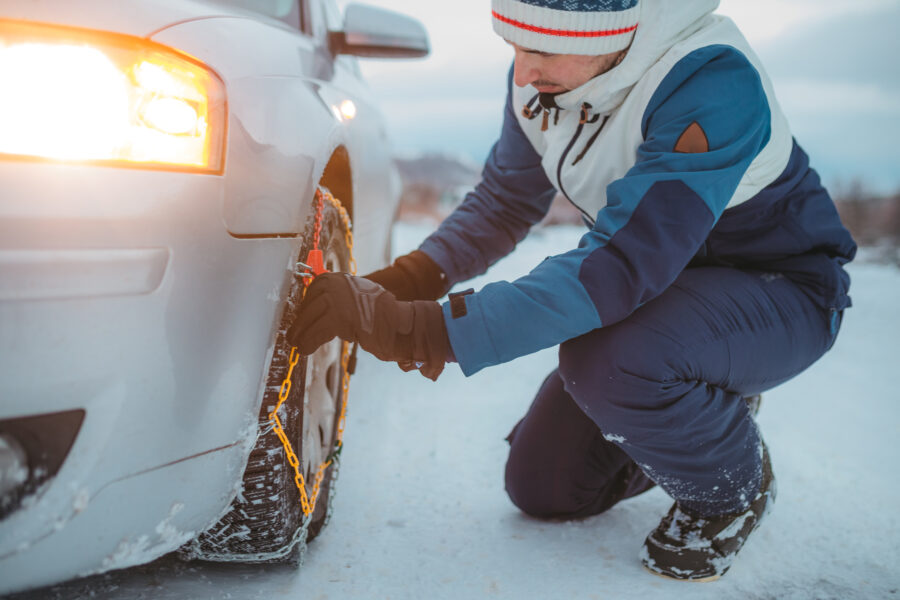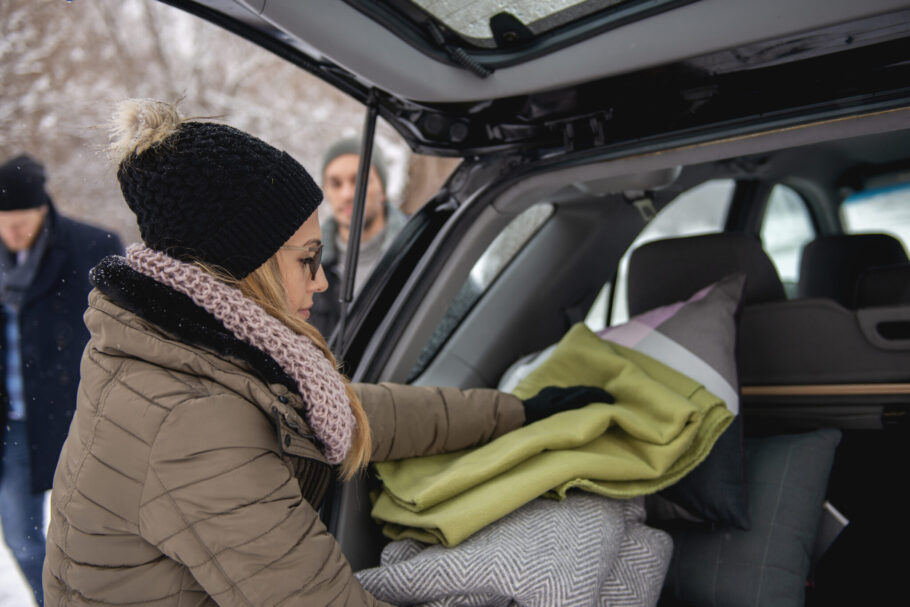Between the reduced daylight hours and hazardous road conditions, winter can be a dangerous time of year for drivers. To keep yourself and your passengers safe, learn how to prepare your car for winter.
Don’t Let the Cold Weather Catch You Off Guard
Depending on where you live, the first snow of the season may fall before winter has technically started. According to The Weather Channel, the first measurable snow of the season can occur in October in states like Montana and Wyoming, but for much of the country, it tends to occur in November or December. Some southern states may not see their first snowfall until as late as January or February.
Even if you live in a warm climate, winter weather is possible. Many Texans found this out during the severe ice storm that struck the state in February 2021. Even in less severe weather conditions, roads may be icy, especially on bridges, at night and in the early morning. A day trip up north may also put you in the midst of wintery weather.
Don’t let bad weather catch you by surprise. Just like winterizing your home, preparing your vehicle for the winter weather is an important step in keeping yourself and your most expensive assets protected.
Check Your Windshield Wiper Fluid
Visibility is critical at any time of the year, but it can be especially important in bad weather. Check your windshield wiper fluid levels regularly and refill as needed. If you’re driving in freezing temperatures, use windshield wiper fluid that’s formulated not to freeze. Also, make sure to check your windshield wiper blades and replace them if they’re no longer functioning optimally.
Check Your Car Battery
Drops in temperature can impact your car battery. Since you don’t want your car battery to fail unexpectedly, be mindful of its age and check it periodically. If you notice corrosion on your battery connectors, weak headlights, slow engine start or other electrical issues, your battery may need to be replaced. Auto repair shops, tire stores and places that sell batteries will often test your battery for you, or you can test your battery at home by using a multimeter.
Take Your Car for an Oil Change and Tuneup
Regular oil changes keep your car performing well. According to Car and Driver, how often you need to change the oil depends on the car, but it could be as frequently as every three months. Check your car manufacturer’s guidelines to find out how often you need to change the oil. If you’re overdue, schedule an appointment. It’s also smart to get a tune-up to prepare your vehicle for winter, especially if you’re planning a long drive during the colder season.
Determine Whether You Need Snow Tires or Chains
If you live in or are planning to visit a region with particularly cold or snowy winters, you may need winter tires or snow chains. According to Kelley Blue Book, an automotive research company, tests conducted by Canada’s Traffic Injury Research Foundation found that winter tires outperform all-season tires in terms of traction, braking and cornering in all cold weather driving conditions. Winter tires can reduce braking distances by as much as 30 percent.
Snow chains can be critical if you’re heading to high elevations with lots of snow. States often have laws dictating when you must and must not use chains since using chains when there’s not a significant amount of snow or ice can cause damage to your car and the roads.
Stock Your Car with Emergency Supplies
Make sure you have emergency supplies in your car in case you become stranded. This is always a good idea, but it’s especially important to have a survival kit during winter weather conditions.
The National Safety Council says you should keep an emergency supply kit in the trunk of your vehicle and check it every six months to replace expired items. Your emergency kit should include:
- Items for your car, including a spare tire, wheel wrench, tripod jack, jumper cables, windshield washer fluid and cat litter for traction.
- Nonperishable, high-energy food items and drinking water.
- Warm clothing, blankets, a rain poncho and a reflective vest in case you need to walk to find help.
- Other essentials, including a toolkit or multipurpose tool, a flashlight, extra batteries, reflective triangles, a compass, a first aid kit, a fire extinguisher, duct tape, a snow brush and a phone charger.
Check Your Tires for Traction and Inflation Levels
Whether you use all-season tires or snow tires, check the traction and tire pressure. The National Highway Traffic Safety Administration (NHTSA) says bad tires cause 600 deaths and 11,000 crashes annually.
Underinflated tires can cause excess tire damage and put you at risk of a blowout. Since changes in temperature can impact the inflation level, it’s important to check your car’s tire pressure when the temperature drops.
According to Consumer Reports, you can use a quarter to determine whether it’s time to replace your tires. If you can see the space above George Washington’s head when you put the quarter upside down into one of the big grooves, you should replace your tires immediately.
Brush Up on Winter Driving Tips
It’s not just your car that needs to be ready for winter. As the driver, you need to be ready to deal with hazardous winter conditions.
- Keep your exhaust pipe clear of snow! You must keep the exhaust pipe clear to avoid carbon monoxide poisoning.
- Reduce your speed. When roads are icy, wet or snowy, you need to drive slowly and leave more space between you and the cars around you to help prevent a collision.
- Watch for black ice. Black ice is particularly dangerous because, unlike the name suggests, it’s invisible. If you hit a patch of black ice, the US Forest Service suggests keeping your steering wheel straight, taking your foot off the accelerator and not hitting the brakes.
- Beware of icy bridges. Bridges are often icy even when surrounding roads are ice-free. Drivers may skid if they continue at normal speeds.
- Know what to do if your car loses traction. North Dakota’s Vision Zero initiative offers detailed instructions on what to do if your vehicle skids.
- Stay home when roads aren’t safe. Check the weather report to find out if conditions are safe. Never try to drive on a closed road.
- Know what to do if you get stuck. If you are stranded in winter weather, in addition to keeping your exhaust pipe clear of snow, the NHTSA also says you should only run your car as needed to stay warm. Don’t run your car for extended periods of time in an enclosed space or with the windows up. Stay with your car, keep the interior dome light on and use bright markers on the antenna or windows to help people see you.
Make Sure You Have Sufficient Car Insurance
Winter can be full of surprises, but your car insurance coverage shouldn’t be one of them. As part of preparing your car for the colder months, it’s smart to review your auto insurance policy so you know what is and isn’t covered under your current plan. Whether you’re facing icy roads or heavy snowfall, having the right car insurance can help provide the comfort and security you need to face the season’s challenges.
If you’re shopping for car insurance or want to secure a more comprehensive policy, Higginbotham is here to help. Talk to one of our personal insurance specialists about your auto insurance needs so we can help you stay safe on the road.






